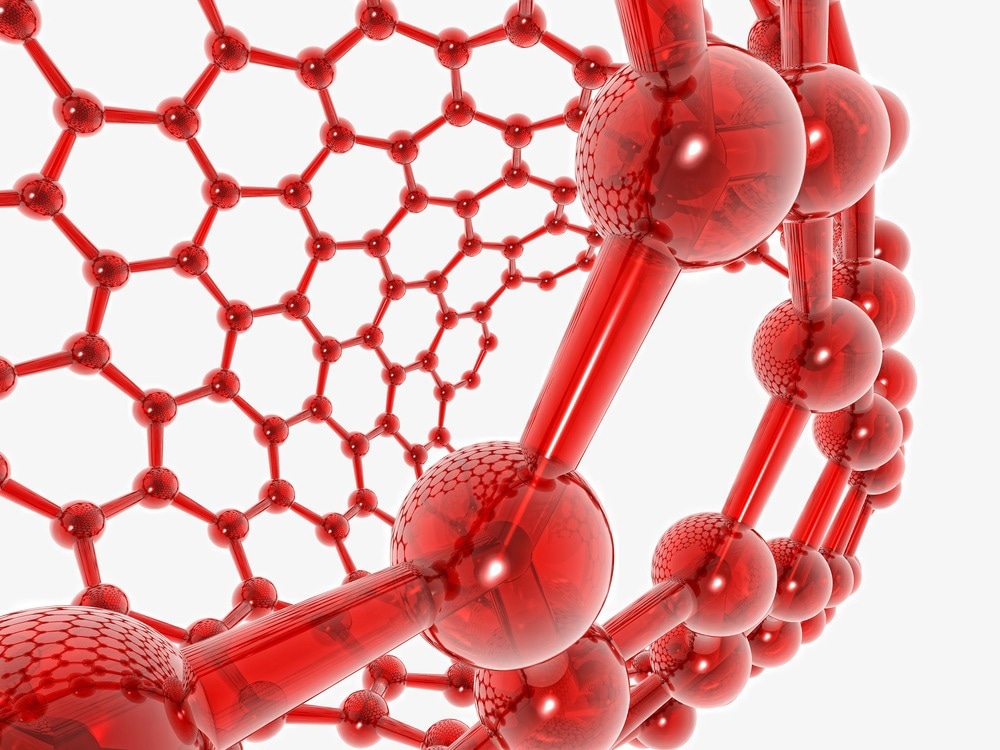N-doped carbon nanotubes offer exceptional electromagnetic wave absorption due to their remarkable structural advantages. In an article published in the journal Carbon, Mn sites with atomic dispersion were inserted into N-doped carbon nanotubes (Mn-Nx/NCNT). The developed material showed remarkable electromagnetic wave absorption capacity.

Study: Atomically dispersed manganese sites embedded within nitrogen-doped carbon nanotubes for high-efficiency electromagnetic wave absorption. Image Credit: Shilova Ekaterina/Shutterstock.com
Importance of Electromagnetic Wave Absorption
With the widespread use of electromagnetic (EM) technology in defense and civic applications, electromagnetic pollution has steadily become a worldwide concern, ranking fourth behind water, air, and noise pollution. It is a cost-effective method of using high-performance electromagnetic wave (EMW) absorption materials.
The optimal electromagnetic wave absorption material must satisfy broad, adequate absorption bandwidth (EAB) characteristics and minimal reflection loss (RL). However, for the actual use of electromagnetic wave dampers, a low contents proportion in the matrix and a low matched thickness are desired.
Limitations of EMW Absorbers
Carbon-based substances, magnetic materials, and plastics have all been extensively researched as electromagnetic wave absorption components. While considerable advances have been achieved in the modulation of electromagnetic wave absorption qualities, there are still flaws like the high filler ratio of the absorbers in the matrices and the high matching thicknesses, which restrict their useful properties.
Regulating morphology and optimizing absorber elements are helpful ways of overcoming these problems. Due to their lightweight characteristics, hollow and porous structures have attracted much interest among the diverse morphologies. Carbon nanotubes (CNTs) with low density and environmental friendliness have emerged as an important study topic.
Advantages of CNTs
Carbon nanotubes have a strong anisotropy and a huge length-to-diameter ratio compared to graphene-based materials, giving them improved electromagnetic wave absorption and insulating characteristics. Furthermore, unlike planar or solid carbon materials, carbon nanotubes' distinctive hollow shape may lower the resistance difference between the absorber and the atmosphere.
Correct composites fabrication and/or component control are excellent approaches for improving carbon nanotubes' electromagnetic wave absorption property.
In this context, several carbon nanotube-based nanostructures have been created, and these composites have increased electromagnetic wave absorption capabilities. Nonetheless, adding foreign components eventually reduced the lightweight property of carbon nanotube-based absorbers.
Compared to nanoparticles and groups, atomically scattered metallic atoms inside carbon materials (M-Nx-C) with significant surface free energy, quantum effects, and nearly 100% atomic usage rate has piqued the interest of many scientific fields.
Local electrons reorganization may also adjust the density state, benefiting M-Nx-C-based absorbers' line losses. Notably, as opposed to graphene, the mass density of carbon nanostructures having molecularly scattered M-Nx-C moieties is raised finitely.
Carbon nanostructures with molecularly distributed M-Nx-C shapes were shown to be interesting options for high-performance electromagnetic wave absorbers. On the other hand, the electromagnetic wave absorption process applicable to a cylindrical construction with integrated M-Nx-C is still largely unexplored.
Improvements Achieved with CNTs
N-doped carbon nanotubes with Mn single atoms were synthesized for high-performance electromagnetic wave absorbers. The N-doped carbon nanotubes demonstrated good electromagnetic wave absorption despite having a low filler ratio of just 7%.
Theoretical results and empirical data showed that the excellent electromagnetic wave absorption ability of Mn-Nx/NCNT was due to greatly improved polarisation loss produced by Mn single atoms and the nanotubes' huge size distribution.
The computer simulation technology (CST) was utilized to validate further Mn-Nx/NCNT's capacity to hide from radio searches in the actual world. As per the current study's results, combining carbon nanotubes with single metal atoms was an effective technique for strong electromagnetic absorption.
Highlights of the Study
To summarise, the Mn-Nx/NCNT system was created utilizing a MnO2 nanowire as a model. Even with a filler ratio of just 7%, the N-doped carbon nanotubes demonstrated outstanding electromagnetic wave absorption at a low matched thickness. N-doped carbon nanotubes had a reflection loss of more than 20 dB and an effective absorption bandwidth of 4.15 GHz, which was greater than that of most documented carbon-based reflectors.
According to DFT calculations, the inclusion of atomically distributed Mn-Nx moieties supplied Mn-Nx/NCNT with good electrical conductivity and polarizability, increasing electromagnetic wave absorption. Furthermore, the wide surface area and abundance of holes aided in lowering the filling proportion of N-doped carbon nanotubes in the paraffin framework.
Under realistic application circumstances, computer simulation technologies proved that Mn-Nx/NCNT has the capacity to filter electromagnetic wave energy. The results of the study pave the way for the development of a high-performance metal single-metal-based electromagnetic wave absorber.
Reference
Wang, Y., Shi, Y., Zhang, X., Yan, F., Zhang, J., & Zhang, X. (2022). Atomically dispersed manganese sites embedded within nitrogen-doped carbon nanotubes for high-efficiency electromagnetic wave absorption. Carbon. Available at: https://doi.org/10.1016/j.carbon.2022.07.051
Disclaimer: The views expressed here are those of the author expressed in their private capacity and do not necessarily represent the views of AZoM.com Limited T/A AZoNetwork the owner and operator of this website. This disclaimer forms part of the Terms and conditions of use of this website.